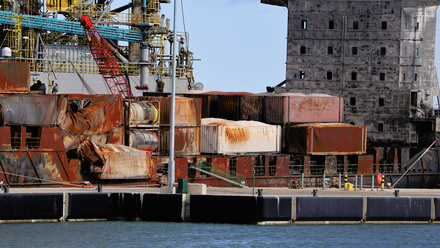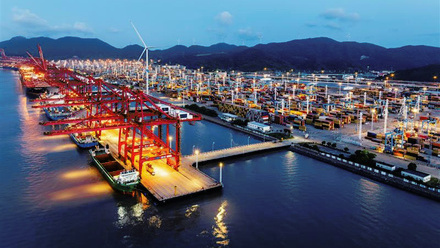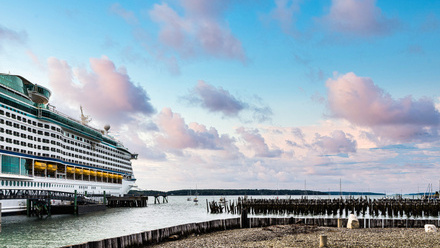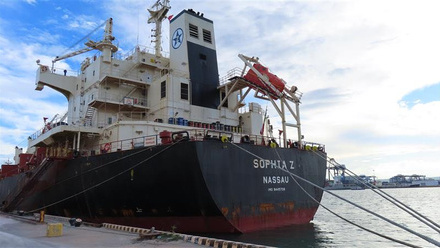Mooring line recoil causes fatality on Mona Manx
Accident on bulk carrier results in revised training and regulations, and a full review of mooring safety.
In many cases, seafarers understand that mooring lines are not an item with which to mess around. Nevertheless, repetition can make any task, however dangerous, seem mundane. On a calm August morning in 2021, a routine operation turned fatal on board bulk carrier Mona Manx, as the vessel was berthing at Puerto Ventanas, Chile.
The Isle of Man–registered vessel, operated by Union Marine Management Services, was arriving in Chile to load cargo. The ship’s bridge and deck teams were experienced, and conditions were good: light winds, fine visibility, no sign of difficulty.
The pilot came aboard as usual, and berthing began using a standard arrangement - forward and aft lines run to shore, followed by breast and spring lines. With the vessel initially secured, the plan was to manoeuvre astern about thirty metres to align with the loading arm. The adjustment was carried out using the ship’s engines rather than tugs or shore winches, rather than disconnecting and restarting the procedure.
At the aft station, the mooring party had already sent out a spring line, which ran from the ship, down the fairlead, and across to the quay bollard. As the ship moved astern, tension came on the spring line, as anticipated, but unbeknownst to the crew, the line was caught under or between one of the quay’s fenders.
These heavy cylindrical fenders stuck out around one metre from the quay face, a gap just large enough for a slack line to drop into and get stuck. As the vessel’s engines continued to work astern, the line stretched and the winch brake began to strain. On deck, the second officer, acting as aft mooring supervisor, likely moved forward to observe the lead of the line and check its angle. From this new position, he was above the area where the trapped rope ran taut along the deck and down to the fairlead.
Moments later, the entrapment gave way. Freed from beneath the fender, the line recoiled, whipping upward in a violent arc. It struck the second officer and threw him backward into the accommodation ladder behind him. The blow was catastrophic. Despite immediate first aid from crew and emergency responders ashore, he died from severe injuries before reaching hospital.
Lessons learned
A subsequent UK Marine Accident Investigation Branch investigation found that several factors had converged and ultimately led to the accident. The decision to manoeuvre the vessel astern while lines remained deployed had not been formally risk-assessed, and the port’s own procedures prohibited such “ship running manoeuvres” while alongside.
The entrapment hazard was not identified in time; the risk of recoil, well-known in theory, was unappreciated in practice, making a routine manoeuvre, in fact, a high-risk operation executed without full situational awareness.
Crew, well-trained in the traditional “snap-back zones” associated with mooring lines, were unaware that a trapped line could release energy vertically rather than horizontally across the deck. The second officer’s position – above decks and technically outside the marked snap-back areas – had appeared safe. The vessel’s safety management system described mooring operations in general terms but did not require a specific risk assessment for manoeuvring with lines in the water.
Mona Manx’s managers undertook a fleet-wide review of mooring safety, updating mooring risk assessments for berthing operations and providing training videos illustrating the circumstances of the fatal recoil. The company further amended its pre-arrival checklist to ensure that every mooring party carried out a short briefing before operations began.
At a regulatory level, the UK’s Code of Safe Working Practices for Merchant Seafarers (COSWP) was amended to include explicit guidance on the danger of vertical recoil and line entrapment. The revision emphasised that snap-back zones can exist in any direction, not just along the plane of the deck. Dynamic risks such as fender entrapment or line-over-line contact must be considered as part of every mooring plan.
Mooring remains one of the more dangerous tasks at sea, responsible for a significant share of serious injuries and fatalities each year. According to the accident report, between 2011 and 2023, the, “IMSR (International Management Safety Code) recorded 23 injuries and two fatalities, including this one, resulting from mooring deck accidents.”
Tell us what you think about this article by joining the discussion on IMarEST Connect.
Image: Mona Manx moored at the Port of Amsterdam before the accident in 2021. Credit: Shutterstock.






